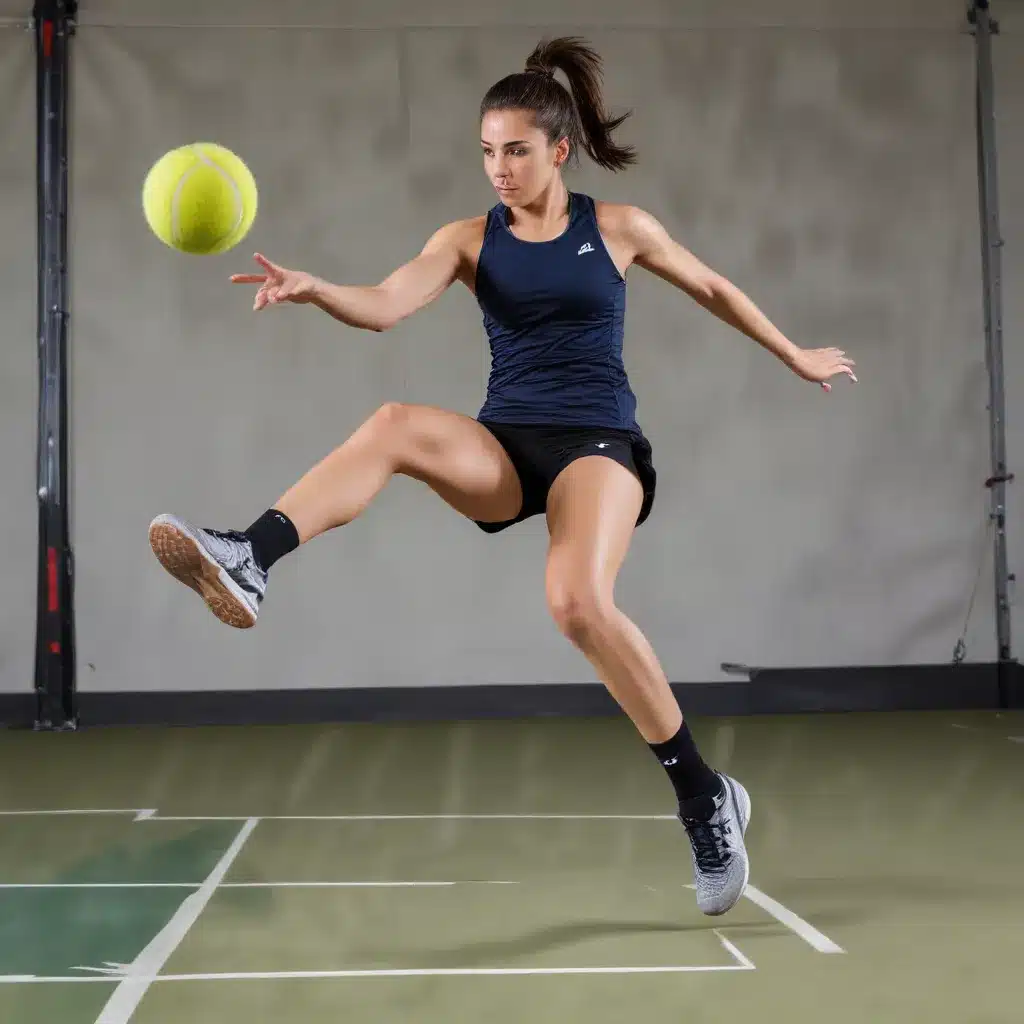
The Importance of Plyometrics in Tennis Training
Plyometric exercises have become an essential component of tennis training programs, as they effectively enhance the agility and quickness required for successful performance on the court. These explosive, high-intensity exercises target the stretch-shortening cycle, a key mechanism that underpins the rapid force production needed in tennis.
In the context of London, where tennis is a popular sport with a vibrant community, staying up-to-date with the latest training techniques and regulatory requirements is crucial for both coaches and players. This article will delve into the implementation of plyometric drills, explore the benefits they offer, and provide guidance on ensuring compliance with local regulations and best practices.
Understanding Plyometric Exercises
Plyometric exercises, also known as “jump training,” involve rapid, powerful movements that involve a stretch-shortening cycle. This cycle consists of an eccentric (lengthening) muscle action, immediately followed by a concentric (shortening) muscle action. By capitalizing on the elastic energy stored in the muscle-tendon complex during the eccentric phase, plyometrics enable the athlete to generate greater force and power output during the subsequent concentric phase.
In the context of tennis, plyometric exercises can enhance an athlete’s ability to quickly change direction, react to incoming shots, and generate explosive movements for serves, volleys, and groundstrokes. These improvements in agility and quickness can provide a significant competitive edge for tennis players in London.
Regulatory Compliance and Best Practices
When implementing plyometric drills in a tennis training program in London, it’s essential to adhere to local regulations and best practices to ensure the safety and well-being of the athletes. The UK Sports Law and Regulation guidelines outline the legal requirements and industry standards that must be followed.
One key regulation is the importance of proper coach certification and supervision. In London, all tennis coaches must be accredited by the Lawn Tennis Association (LTA), which provides comprehensive training and certification programs. Coaches must be knowledgeable about the biomechanics of plyometric exercises, the appropriate progression of drills, and the necessary safety precautions.
Additionally, the training facility must meet specific requirements, such as having a suitable surface for plyometric exercises, adequate safety padding, and appropriate emergency procedures in place. The Sports Grounds and Stadia Guide outlines the regulations and best practices for tennis facilities in London.
Designing Plyometric Drills for Tennis Players
When creating a plyometric training program for tennis athletes in London, it’s essential to consider the specific demands of the sport and the individual needs of the players. A well-designed program should incorporate a progressive approach, starting with basic exercises and gradually increasing the complexity and intensity as the athletes demonstrate readiness.
One common plyometric exercise for tennis players is the box jump. This drill involves jumping up onto a box or platform, landing with both feet, and then immediately jumping back down. To progress the exercise, coaches can increase the height of the box, incorporate lateral movement, or add a rotation in the air. Another effective plyometric drill is the lateral bound, where players explosively jump from side to side, focusing on generating power and quickly changing direction.
It’s important to note that the cost of implementing a comprehensive plyometric training program can vary depending on the specific equipment and facility requirements. In London, the average cost for a professional tennis training session with plyometric drills can range from £50 to £100 per hour, with additional costs for specialized equipment and facility rental. However, many tennis clubs and academies in the city offer group training programs that can be more cost-effective for individual players.
Integrating Plyometrics into a Comprehensive Training Plan
While plyometric exercises are a crucial component of a tennis training program, they should be integrated into a well-rounded approach that also includes strength training, cardiovascular conditioning, and sport-specific skill development. This holistic approach ensures that players in London develop the physical attributes and technical abilities necessary for optimal performance on the court.
Coaches in London should work closely with sports scientists, physical therapists, and other professionals to design individualized training plans that account for the player’s age, skill level, injury history, and specific areas for improvement. Regular assessments and adjustments to the training program are essential to ensure that the athletes continue to progress and reach their full potential.
Advancements in Tennis Technology and Equipment
In addition to the training techniques, the world of tennis is constantly evolving, with advancements in technology and equipment that can enhance the player’s performance and aid in the implementation of plyometric drills. In London, tennis enthusiasts and coaches have access to a range of innovative products and services that can support their training efforts.
One such advancement is the integration of wearable sensors and tracking devices, which can provide real-time data on an athlete’s movements, jump height, and other performance metrics. These tools can help coaches and players analyze the effectiveness of plyometric exercises and make data-driven adjustments to their training programs.
Furthermore, the development of specialized plyometric training equipment, such as adjustable hurdles, agility ladders, and plyo-boxes, has made it easier for tennis players in London to incorporate these exercises into their training routines. These specialized tools not only enhance the efficacy of the drills but also ensure that the training environment meets the necessary safety standards.
Conclusion
In the vibrant tennis community of London, the integration of plyometric exercises into training programs has become an essential component of player development and performance enhancement. By understanding the mechanics of plyometrics, adhering to local regulations and best practices, and leveraging the latest advancements in technology and equipment, coaches and players can effectively improve their agility, quickness, and overall tennis abilities.
As the sport continues to evolve, it’s crucial for tennis enthusiasts in London to stay informed and adapt their training strategies to meet the changing demands of the game. By embracing plyometric drills and a comprehensive approach to training, tennis players in the city can unlock their full potential and thrive on the competitive courts of London.

